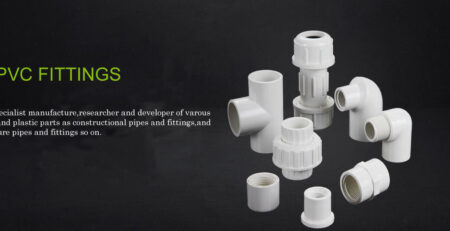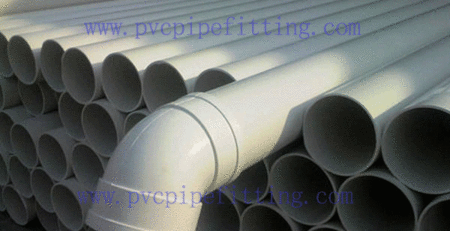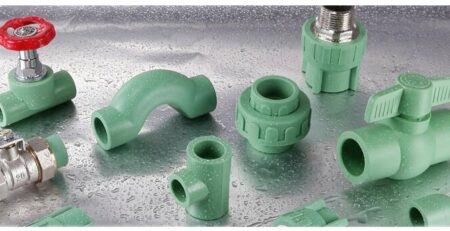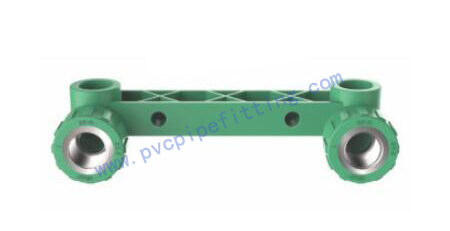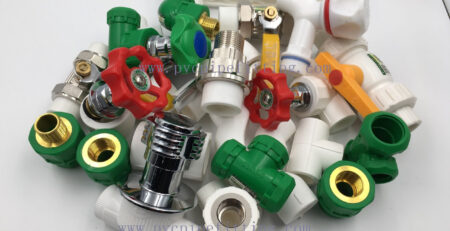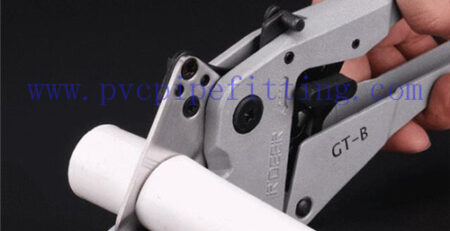PVC pipes have many advantages, but they also have their own shortcomings. So, what causes these problems? How should we deal with these problems? The PVC pipe manufacturer will give you the answer:
Briefly explain the common problems in the production of PVC pipes:
1 . The impact strength and tensile strength are poor, which are caused by improper raw material formula, the poor mixing effect of the composite system, and unreasonable setting of extrusion process parameters, resulting in poor plasticization.
2. The strength reduction caused by residual internal stress, large shrinkage rate, and weld line defects of PVC pipe can be solved by the following methods:
2.1 Thick-walled pipes are prone to internal stress. In the process of shaping and cooling, the compressive stress is on the outside of the pipe, and the tensile stress is on the inside of the pipe, causing uneven internal stress distribution in the pipe. Therefore, rapid cooling is not suitable and should be carried out gradually to avoid the inside of PVC pipe. When residual stress occurs, the tube blank needs to be shaped and cooled by a longer (at least 6M) cooling water tank. Cooling water is injected from the last section of the water tank to make the water flow direction opposite to the tube blank movement direction to facilitate cooling and relaxation. In addition, the residual internal stress of the pipe is related to the compression ratio of the extrusion die. If the compression ratio is too small, the product will not be compact, the strength will be low, and residual stress will easily occur. The large shrinkage rate of the pipe is due to the increase in the longitudinal shrinkage rate of the pipe due to the excessively fast traction speed, so the traction speed is generally 1%-10% faster than the extrusion speed.
2.2 The occurrence of weld marks on PVC pipes will result in poor radial strength of the pipes. The weld mark is a linear mark of the molded part, which is caused by the incomplete fusion on the surface of the two streams when they meet during extrusion. The strength of the PVC pipe decreases at the fusion mark. The fundamental reason is that the shear stress and elastic deformation of the bracket pipe mold increase, and the weld mark is increased. There are two treatment methods. The first is to check the strength of the bracket when designing the mold. After nucleation, reduce the thickness and length of the bracket as much as possible. The transition part of the splitter should be longer to make the plastic stay longer in the machine head. On the other hand, check the compression ratio of the mold. The compression ratio should be 3 5. If the compression ratio is too small, the length of the shaping section can be increased or the die temperature can be appropriately increased.
2.3 Improper control of extrusion temperature will not only cause surface defects of the pipe but also affect the internal quality of the pipe. Excessive extrusion and die temperature will cause melt decomposition, low temperature, poor plasticization, low melt strength, poor surface gloss, and poor toughness; the determination of temperature mainly depends on the raw material formula, screw and die structure, screw speed, etc.
2.4 Bending and deformation. Bending and deformation are caused by internal stress and are most prominent in the shaping and cooling process.
2.4.1 The tube blank is completely immersed in water when passing through the water tank, and the tube blank is completely shaped when it leaves the sink and becomes a pipe. Because the upper and lower water temperatures in the water tank are different, the cooling rate of the upper and lower parts of the pipe is different, causing the pipe to bend, especially In the production of large-caliber pipes, due to the large buoyancy of the pipe in the water, it will cause bending. In order to make the cooling uniform, it is best to use a spray water tank with 4-6 cooling nozzles evenly distributed around the circumference.
2.4.2 When the internal pressure sizing method is used, the pipe is often deformed or broken. This is because the sizing sleeve is too short and the effect of the pre-diameter is too poor. 2.4.3 The tractor adopts the crawler type, which has little effect on the deformation of the pipe. Because the crawler tractor has a large traction force, a large contact surface with the pipe, the pressing force is adjustable, the traction force is constant, and it is not easy to slip.
2.4.4 Bending deformation is caused by uneven wall thickness, uneven die gap, the uneven surrounding temperature, deviation of certain equipment on the production line from the centerline, and unstable compressed airflow, which will cause uneven thickness. Therefore, the uniformity of the die gap, the quality of the heating ring of the machine head, and the sensitivity of the temperature control system should be checked regularly, and the temperature difference around the machine head caused by the open circuit of the electric heating coil, uneven winding, and failure of the temperature control system should be ruled out. Regularly check the concentricity of the production line. If the main and auxiliary equipment of the production line is not in the same line, the PVC pipe will deflect in one direction, and the pipe wall in this direction will be thin. Here, the concentricity of the inlet and outlet holes of the cooling water tank will also affect the deformation of the pipe.
3. Wrinkles, cracks, black lines, and moiré.
3.1 Wrinkles on the PVC pipe surface are mainly caused by improper adjustment of the traction speed. The pulling speed is faster than the extrusion speed and can be adjusted steplessly. On the one hand, the wall thickness of the pipe can be controlled by adjusting the traction speed; on the other, the pipe blank can be drawn out uniformly from the die. As long as the traction speed and the extrusion speed have irregular fluctuations, it will cause wrinkles or slubs in the pipe. When the extrusion speed of the pipe is constant, if the traction is too fast, the pipe wall will be too thin and the blasting strength will not meet the requirements; If the drawing speed is too slow, the pipe wall is too thick, and even accumulation occurs at the die. When the traction speed is constant and the screw speed is increased, the pipe will appear wavy, uneven, and wrinkled.
3.2 There are cracks and roughness on the inner wall of the pipe. On the one hand, the raw material has impurities. On the other hand, the actual temperature of each section is checked during operation to eliminate the false temperature caused by the failure of the control system, the damage of the instrument, and the falling off of the thermocouple. If all the above are normal, the problem is that the temperature of the extrusion or die is too low. The temperature of each section should be increased appropriately. If the adjusted temperature is higher than the dangerous value of rigid PVC, the traction speed should be slowed down to make the melt Longer residence time in the machine, so that the material can be fully plasticized. When the screw is running at a high transmission speed, the frictional heat of the screw is too high, and it is easy to cause the inner wall of the pipe to be rough. This is the most taboo for PVC with high melt viscosity and poor fluidity. At this time, the screw should be properly cooled by water. The temperature of the outlet water should be controlled at 70-80 ℃, and at the same time prevent excessive cooling and accidents of the equipment.
3.3 The direct cause of defects such as moiré, black streaks, burnt grains, dullness, etc., is either insufficient plasticization or material decomposition. The stabilizer should pay enough attention to controlling vulcanization pollution. Cadmium sulfide is yellow and lead sulfide is black. Strictly control the temperature of each section of the extruder and die. Low temperature, poor plasticization, and moiré; high temperature, material decomposition is easy to produce black Spot, the macula. If the color and texture of the pipe produced when the machine is turned on, it may be that the material of the mold or the sizing sleeve is improperly selected, and it is rusted, and it is easy to form discoloration lines such as yellow and brown. The material of the mold should be stainless acid-resistant steel, or The inner cavity parts are chrome-plated and polished.
4Bubble and dimensional accuracy.
4.1 Air bubbles generated in the pipe are often related to the moisture content of the resin and additives. Excessive moisture causes air bubbles to be porous in the pipe.
4.2 If there are bubbles in the pipe, the temperature at the die should be slightly lower, and the extrusion speed should not be too fast to eliminate the bubbles in the pipe. At the same time, when cooling and shaping, it is not advisable to use rapid cooling, otherwise, the pipe will easily produce bubbles.
4.3 The main points to ensure precise control of the outer diameter and wall thickness of the pipe are as follows:
The tube blank must be calibrated and cooled immediately when it is released from the mold to control the vacuum degree and ensure the pressure.
The above is the reason and treatment method of PVC pipe defects provided by the editor of PVC pipe manufacturers. I hope to help you better understand PVC pipes.

